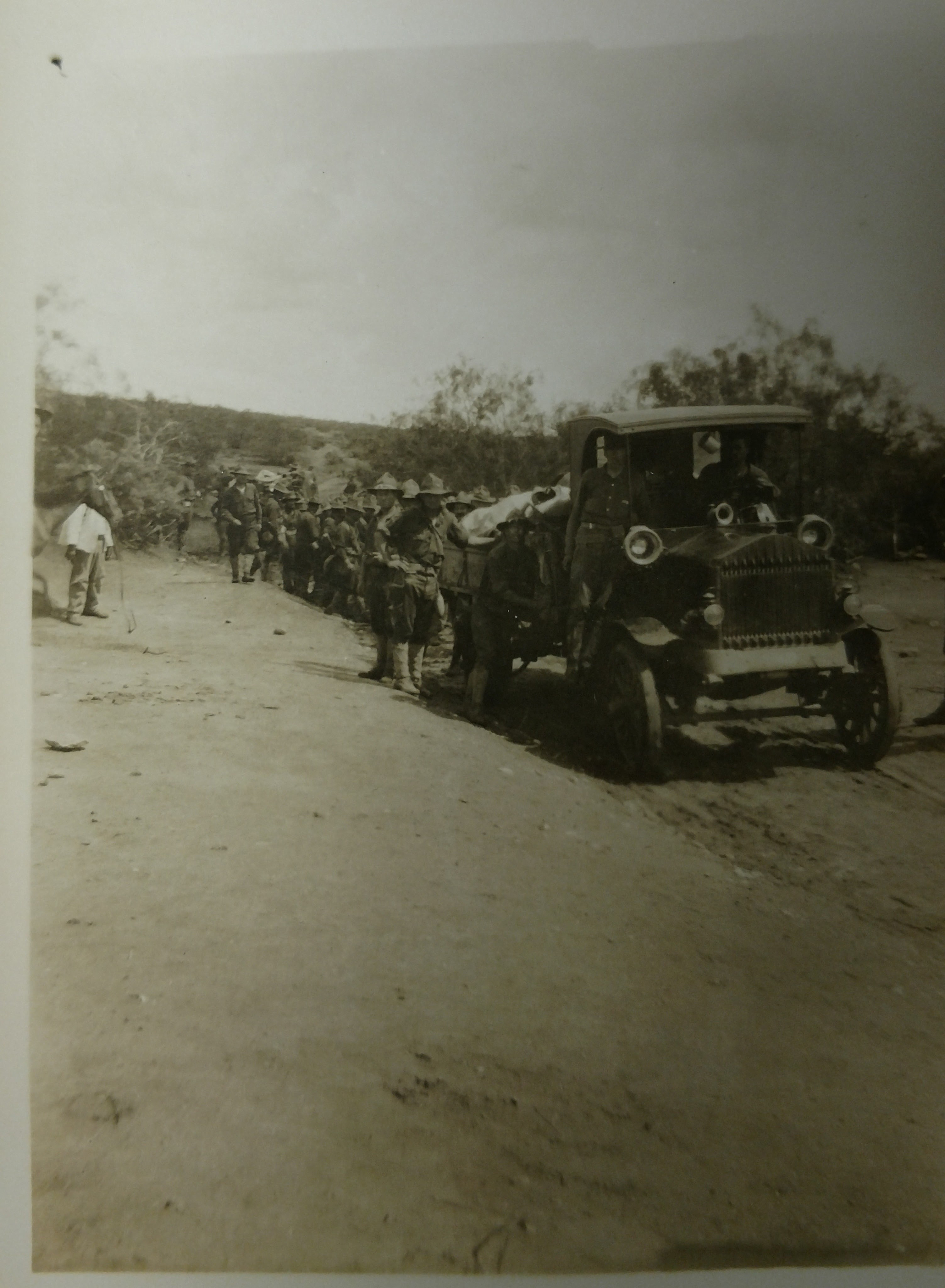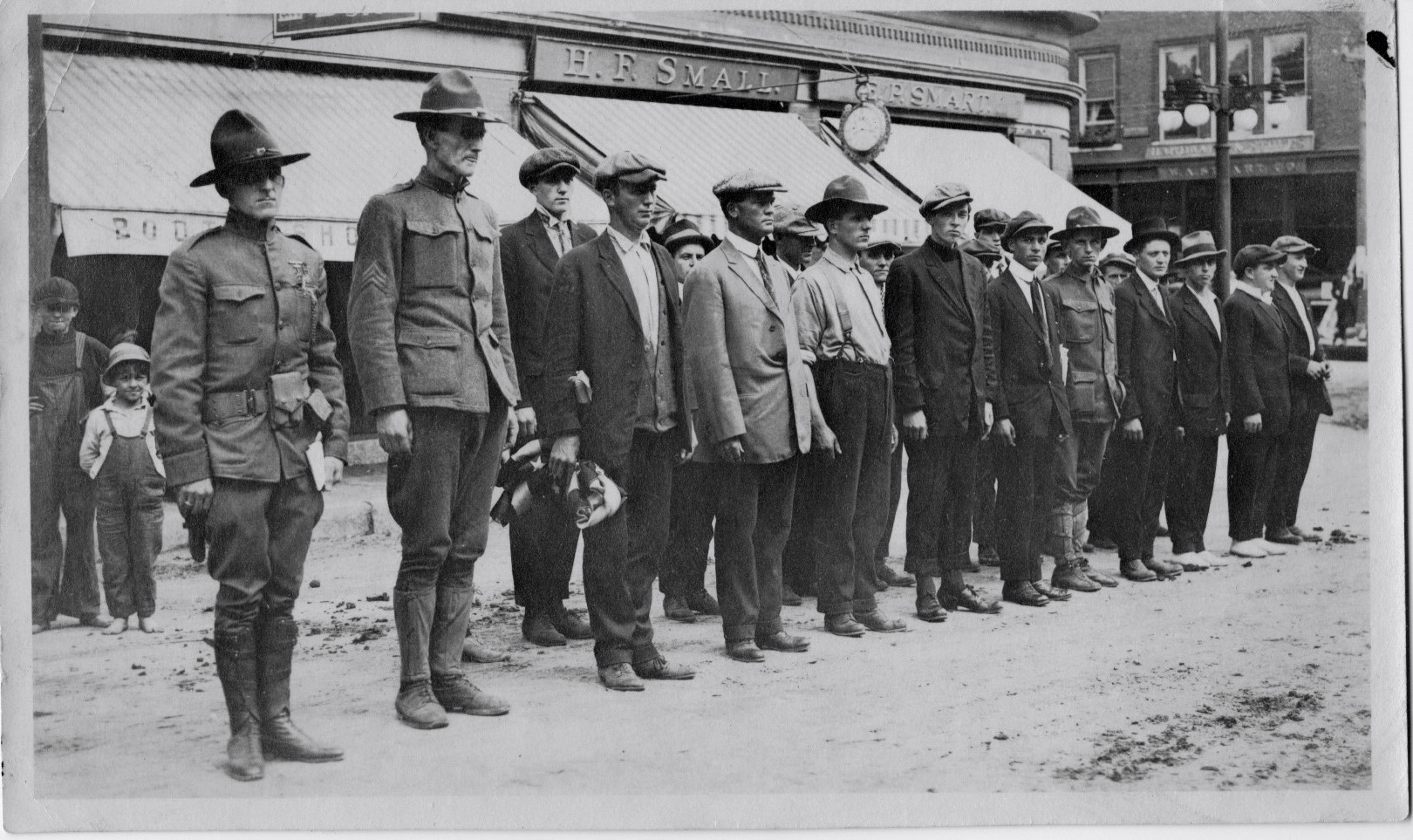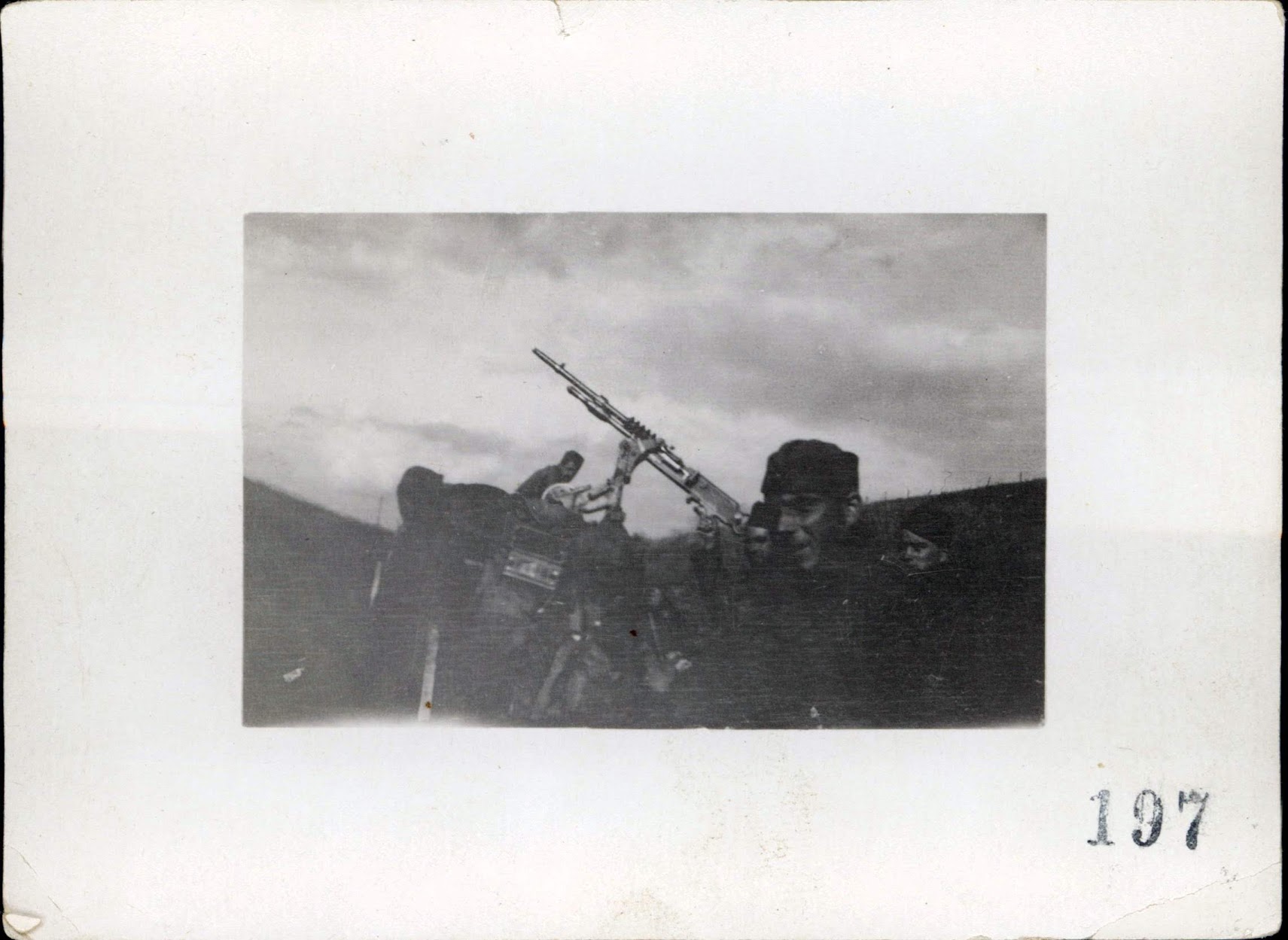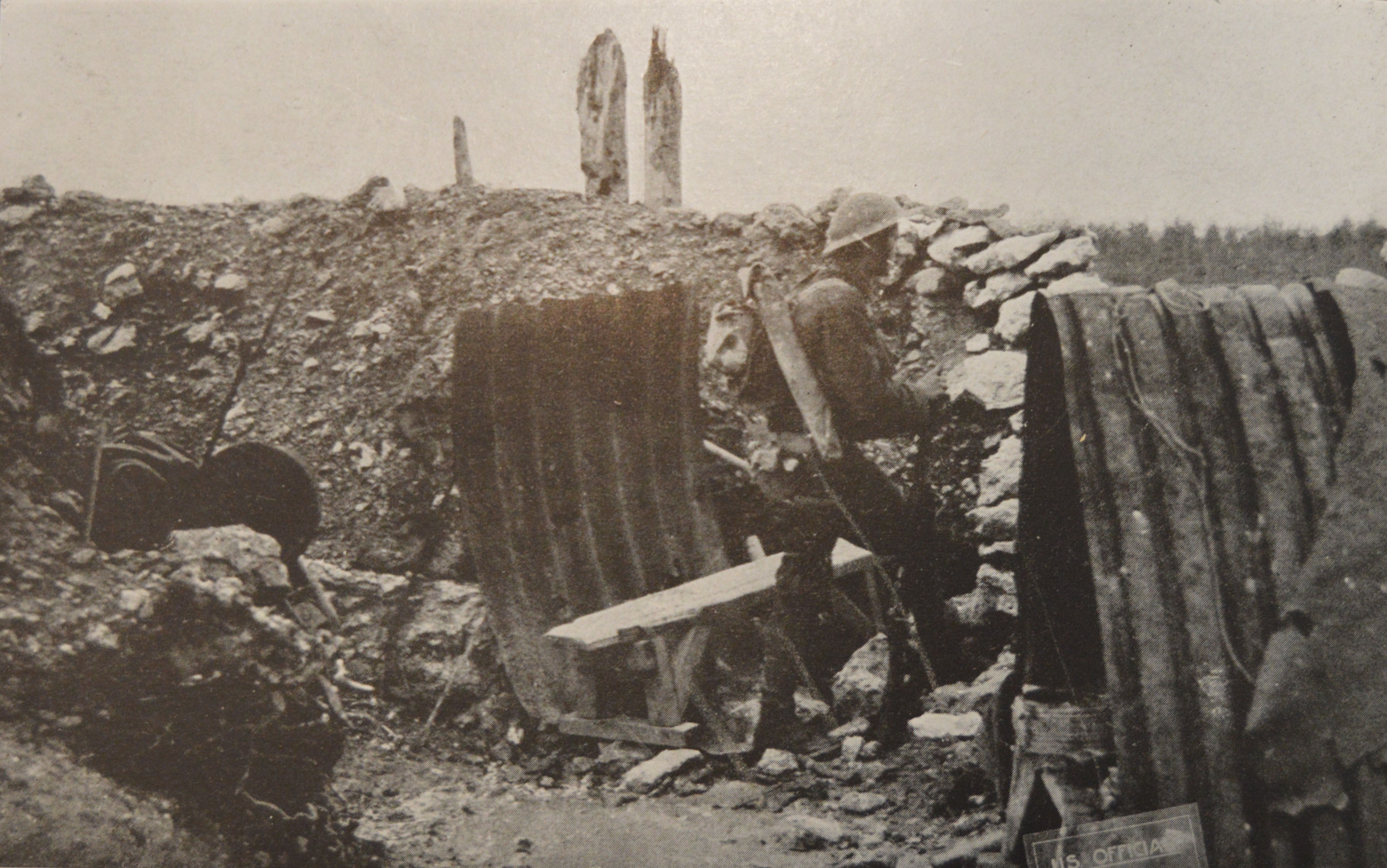World War I
When World War I began in Europe in August of 1914, the Maine National Guard principally consisted of 13 batteries of Coast Artillery and the 2nd Maine Infantry Regiment.
The 2nd Maine was called up for active service on the border with Mexico in 1916. From July to October, the 2nd Maine patrolled a section of the Rio Grande near Laredo, Texas. The service was mostly boring, dusty, and hot, but it taught many valuable lessons to the leaders.

After World War I was declared in 1917, the entire National Guard of the state was called into service of the United States. The War Department granted authority in September, 1917 for the establishment of an infantry regiment of National Guard, “to be fully equipped by the National Government and under its control, but not to be in Federal service unless called, the policy being to hold the newly organized National Guard units for service in the state.” This unit was formed around the 2nd Maine Infantry and was designated the 103rd Infantry Regiment, assigned to the 26th "Yankee" Division.

The 103rd Infantry spent several months at initial training in Massachusetts before departing for France in 1917. The regiment arrived at Le Havre, France on October 16-21 and settled into a period of training under French advisor supervision.
They moved to the front lines near Chemin des Dames on the Soissons Front on February 6, 1918. It was here that the regiment experienced its first combat, coming under artillery and gas attacks. Private Ralph Spaulding from Madison, serving in Waterville’s Company H, became the regiment’s first combat death on February 13, 1918.
On April 1, the 103rd transferred to the Toul Front which was threatened by a German offensive. The regiment held this defensive sector for three months, experiencing heavy fighting. On June 16, 600 picked German troops launched a heavy raid against Companies L, I, and E of the 103rd around the village of Xivray. The regiment distinguished themselves in this action, as evidenced by the following vignettes. A German machine-gun squad had just entered an American trench, and were spotted by Sgt. Verne Boutlier of Houlton, who assaulted them with his automatic rifle, which was soon broken by enemy fire. He then attacked them with just his bayonet, taking the machine gun, and using it against the enemy. At another point, a German flamethrower team of three men got close to the lines and Lieutenant Roger Williams shot the man with the flamethrower, detonating the tank and killing all three. During the assault, the Germans took one prisoner, Private Joseph Hamlin. Hearing of this, Lieutenant Irvin E. Doane from Hamden led a rescue party of seven men who re-captured the Soldier as well as several Germans. The German assault was decisively defeated and the regiment received commendations from both the French and General Pershing. The regiment was moved from Toul at the end of the month.

The next position held by the 103rd was on the Chateau-Thierry Front, where they first went on the assault. They replaced the Marines in Belleau Wood on July 5, but they would not remain here long. On the 18th, the 103rd took part in the 26th Division's assault. In the first twenty-two minutes, the 3rd Battalion had seized the village of Torcy to their front. After the first hour they had consolidated their position and thrown up defensive positions. The 2nd Battalion attacked to seize the railroad running from Belleau to Bouresches. It was during this assault that Private First Class George Dilboy in Waterville’s Company H destroyed a German machine gun position, giving his own life in the action. He was posthumously awarded the Medal of Honor, the citation for which reads: “After his platoon had gained its objective along a railroad embankment, Pfc. Dilboy, accompanying his platoon leader to reconnoiter the ground beyond, was suddenly fired upon by an enemy machinegun from 100 yards. From a standing position on the railroad track, fully exposed to view, he opened fire at once, but failing to silence the gun, rushed forward with his bayonet fixed, through a wheat field toward the gun emplacement, falling within 25 yards of the gun with his right leg nearly severed above the knee and with several bullet holes in his body. With undaunted courage he continued to fire into the emplacement from a prone position, killing 2 of the enemy and dispersing the rest of the crew."
General Pershing, commander of the American Expeditionary Force, called Dilboy one of the "ten great heroes" of the war. Dilboy was born in a Greek community in what is now Turkey and was the first Greco-American to receive the Medal of Honor.
On July 20, the 1st Battalion of the 103rd Infantry attacked to seize Hill 190, the key to the German defensive position. By nightfall, Hill 190 was in U.S. hands, although the attackers had taken heavy casualties. The battalion commander, Major James W. Hanson, sent back this message to regimental headquarters: "Tell the Colonel we have taken and are consolidating the position but have had tremendous losses, have less than 200 men in the line available for duty but will hold the position to the last man." This is considered the origin of the regiment's motto, "To the Last Man," which is continued by the 133rd Engineer Battalion to this day. The entire regiment remained on the offensive until July 24 when they came off the line.
After a brief respite, the 103rd went on the offensive again on September 12 on the St. Mihiel Front. They went over the top, breaking through four successive German lines of defense and capturing 1,200 prisoners. The next morning, the regiment seized Chanot Bois, Billy-sur-les Cotes, and Vieville-sur-les-Cotes. This operation was highly successful.

At the beginning of the Meuse-Argonne Offensive, the 103rd Infantry was assigned the task of conducting a battalion-sized raid as a diversion. The 1st Battalion conducted a raid against Riaville on September 26, in conjunction with the 1st Battalion, 102nd Infantry. Both battalions held the towns throughout the day and fell back at nightfall.
At the end of October, the 103rd Infantry took up a new position along the Heights of the Meuse River, north of Verdun. On November 8, the Germans in front began withdrawing and so the 103rd pursued. Strength was incredibly low at this time, due to battlefield losses, disease, and rotations out of the unit. The regiment attacked strong German positions in the Bois de Ville, seizing it on November 10. On November 11, each battalion assaulted until 11:00 AM, when the guns fell silent. The Armistice had gone into effect.
The 103rd Infantry remained in France until March of 1919 when the regiment returned home to New England. The regiment was mustered out in April, but the 103rd Infantry remained a part of the Maine National Guard. The lineage of the 103rd Infantry is carried on in the 133rd Engineer Battalion, Companies B and D of the 103rd in the 251st Engineer Company, Company E in the 136th Engineer Company, Company H in the 120th Support Group, Company L in the 185th Engineer Support Company, and Company M in the 152nd Maintenance Company.
54th Artillery, CAC
Another unit to go to France from Maine was the 54th Artillery Regiment, Coast Artillery Corps. The 54th was called into Federal service in January of 1918, made up of different batteries of Maine Coast Artillery. The regiment arrived in Le Havre France on April 6, 1918 and was designated the Replacement Regiment for the Heavy Artillery. The regiment was moved to Haussimont (Marne) early in May and remained at that station until September, 1918, when it was divided into a Heavy Artillery Training Battalion, a Tractor Replacement Battalion, and a Railway Artillery Replacement Battalion. The first two battalions left Haussimont late in September for other stations. The organization of the 3rd Battalion as the Railway Artillery Replacement Battalion was completed in September. It remained at Haussimont until December, 1918 when it departed for Angers to rejoin the other battalions of the 54th Artillery (C.A.C.) and return to the United States. This organization classified, trained, and dispatched to the front, replacements for the various units of the Railway Artillery Reserve. Its records show that between April 26-November 26, five hundred and eleven officers and six thousand four hundred and twenty-four enlisted men were disposed of as replacements. The 54th Artillery returned to the United States and was demobilized on March 13th, 1919.
56th Pioneer Infantry (1st Maine Heavy Field Artillery)
The First Maine Heavy Artillery was activated for service in 1917. The regiment had their colors blessed by Bishop Louis S. Walsh at the cathedral in Portland on October 14, 1917. On August 22, 1917, Battery C (Lewiston) was removed from the regiment and became the 101st Trench Mortar Battery, part of the 26th Division alongside the 103rd Infantry. The remainder of the regiment moved to Camp Greene, North Carolina. On February 9, 1918, the regiment became the 56th Pioneer Infantry Regiment, while 100 personnel went to the 101st Engineer Battalion. The 56th Pioneer Infantry was filled with draftees in August, 1918, and departed for France. The regiment arrived in St. Nazaire on September 13, 1918 and was attached to the First Army. Due to the nature of the regiment's mission (acting in concert with infantry and engineers to clear obstacles and build hasty trails), it was broken up into companies and deployed across the Argonne Sector from October 2 to November 11. The regiment suffered four killed in action and twenty-two wounded in action. After the Armistice, the 56th became part of the Army of Occupation in Coblenz, Germany, patrolling areas in the American Sector until May 25, 1919. The regiment arrived back in the U.S. on June 22 and was demobilized on July 1-3, 1919.
101st Trench Mortar Battery
The 101st Trench Mortar Battery was assigned to the 51st Field Artillery Brigade of the 26th Division. They arrived in France on October 29, 1917 and went into training at Coetquidan from October 31, 1917 to February 6, 1918. Like the 103rd, their first front was at Chemin des Dames, armed with ten Newton-Stokes mortars. On April 10 at Apremont, the 101st laid down a mortar barrage in front of the 104th Infantry that broke up and stopped an enemy raid, earning the battery a commendation from division commander Major General Edwards. Two days later they earned another commendation, this time from the French 32nd Army Corps. On May 29-30, they advanced four mortars forward of the infantry and fired over 400 rounds at the enemy before moving their position due to heavy fire. The battery was heavily involved in the actions at Chateau-Thierry, the St. Mihiel Offensive, and the final drive for the Meuse-Argonne. The 101st returned home with the rest of the 26th Division and was demobilized on May 26, 1919.
The Inter-War Years
After World War I, the Maine National Guard underwent a period of reorganization. In 1923 the Coast Artillery was reorganized, with the 54th Artillery becoming the 240th Coast Artillery Regiment.
In 1922 a battalion of field artillery was authorized and designated as the 1st Battalion, 152nd Field Artillery Regiment in Aroostook County. The 2nd Battalion was authorized and raised in 1929, with headquarters at Bangor. Both the 103rd Infantry and the 152nd Field Artillery were assigned to the 43rd Infantry Division in this same year.
In 1935 Company C of the 118th Quartermaster Regiment was allotted to Maine and located in Portland. The strength of the Maine National Guard at that time was 2,549.
Maine campaign credit in World War I includes the following: Champagne-Marne, Aisne-Marne, St. Mihiel, Meuse-Argonne, Ile de France 1918, and Lorraine 1918.
Further Reading:
"An Unlikely War Poet: A Doughboy from Maine" in "On Point: the Journal of Army History"
"Your Men Don't Know How to Fight" - the 103rd Infantry at Xivray - "Army History"